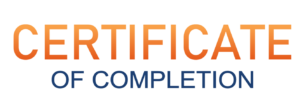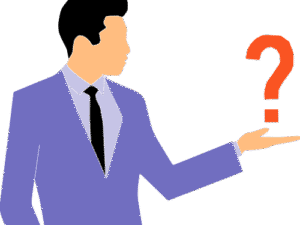Sales Skills 101 For Sales People
- Description
- Curriculum
The Sales Skills 101 Training program is the ultimate sales training course for any level of salesperson, from those starting out to those who want to refresh their sales knowledge.
This 23-lesson (PLUS 140-page eBook) online sales training program covers ALL the major sales steps and sales tactics that a salesperson will ever need in the sales process.
Your sales success is likely to come from figuring out which businesses would understand your product or service and recognize the most value in using it. So, can I suggest that it is time to change? You must be trained to think and act with agility. To help you understand what experience the buyer is seeking.
This business school-standard sales training will guide you on how to sell more effectively to existing customers and how to engage prospects for more meaningful sales conversations. Join over 16,000 salespeople who have completed this sales skills training course since 2021 (updated in 2024). High-performing salespeople can look forward to rewarding careers with above-average earnings and bonuses and are highly valued.
Highlights:
- 23 video lessons plus a 140-page e-book and templates.
- Proven sales techniques with download examples and scripts.
- Developed in conjunction with the UCD business school.
- Build credibility as a subject-matter expert in your industry.
- Master your sales mindset and habits for success in sales.
- Learn who to target and the approaches to get them to listen.
- Identify the buyer’s whys, how to overcome obstacles, and how to handle objections.
- How to put together effective presentations.
- Develop relationships with prospects and create real opportunities to sell.
- Learn all the sales steps, processes, and tactics to sell successfully.


-
1Sales Skills 101 PreviewPreview Video lesson
Soft Skills for Sales from The Digital Sales Institute is a video-driven sales training program designed to help salespeople understand essential non-technical skills for success in the complex selling environments of today and tomorrow.
The program highlights the skills for the way we think, the way we interact with others, how we manage ourselves, and how we communicate.
-
2Sales Skills Training Intoduction5.00
-
3What is Selling21.00
What does selling mean to you today? As a salesperson you know that selling is an exchange of one product or service for something else in return (usually money). The key is streamlining this sales process so that your efforts result in higher sales numbers and higher returns on your time investment. Selling is successfully influencing the buying decision of the client in your favor.
-
4The Psychology of Selling14.00
This lesson covers buyer motivations, plus what makes them switch from one position to another. The first thing all salespeople need to acknowledge is that in order to sell better, we must understand "Buyer motivations." Selling involves getting buyers to act based on a number of factors, which we will cover later in the lesson. To get customers or prospects to make commitments. and be committed to change.
-
5The Steps in Selling17.00
The modern sales process and the steps in selling are focused on how we respond to how buyers’ behaviors are changing due to the rise of digital engagement and online self-education. What do steps in selling encompass?. A comprehensive sales process and mapping of the steps in selling encompass all major customer interactions, from prospecting, nurturing, development, and selling.
-
6How to Measure Sales Progress9.00
The only way to know whether your sales efforts (ROSE- Return On Sales Effort) is successful is by monitoring your sales progress. To improve your sales outcomes, you must identify Yes Commitments or Yes points at each of the stages in your sales process that you can track and improve.
Knowing What you’re selling (where in the sales process) IN the moment is critical.
-
7Buyer Roadblocks15.00
Buyer roadblocks is about understanding the major internal issues that can get in the way of a sale. It may come as a surprise to you that you aren’t simply competing against competitive offerings in the sales process. But you are competing for internal “mind share” and resources against a vast spectrum of alternative priorities that the buyer can pursue.
-
8The Buyer Why’s12.00
For us to truly understanding the buyer’s journey, means embracing the turns in the road. We must acknowledge that success comes from a dynamic approach to selling. The only actions that will move us towards a sale is proving that we understand our customers’ problems and the impact of those problems on their business. We need to understand the modern and digitally influenced, buyers’ journey.
-
9Sales Strategy Selection12.00
A sales strategy is simply about putting in place goals and tactics, then adopting courses of action and allocating your resources to achieve the selected goals and tactics. It doesn't need to be a 50-page document. The motivation or reason to create a sales strategy plan is that business success is tied to the ability of salespeople to generate sales. The revenue and profits that are generated from the sales activity of the business are a direct result of the effectiveness of the sales strategy.
-
10Customer Target Selection12.00
In this lesson, you will learn about ideal customer profiles and how to identify buyers who will value what you are selling. Why should we go through this exercise? Well, the answer is your finite resources and time. It takes time, money, energy and people to attract, convert, and delight new customers!
We need to ensure the allocation of resources to those prospects and customers who will deliver the best return. The reality is, we can’t sell to everyone.
-
11Creating Your Value Proposition16.00
Why create a value proposition? Well, if customers believe they will get more value out of your value proposition than your competitors, over time you will win. Ultimately, every buyer opts to purchase products and services to improve their lives in some way—to extract value. Value equals the rational and emotional benefits customers get from selecting your product or service, minus the price they pay.
-
12Sales Conversation Plan23.00
To begin, think of Sales conversations as content. To maximize your sales conversations, they must be designed and planned, just as media-based content is. The best sales conversations happen when you provide the buyer with valuable, insightful information, in exchange for their time. Learn the effective framework for engaging customers in meaningful conversations.
-
13Buyer Journey Mapping Part 113.00
The customer journey is the path that potential buyers take as they make their way to becoming paying customers. It outlines their activity, expected experiences, and what we as salespeople need to do in each phase of the buyer’s journey. ? How do we anticipate buying obstacles, or roadblocks? and take a customer-centric view during our sales conversations?
-
14Buyer Journey Mapping Part 211.00
Your biggest competitor in a sale is NOT the competition, but the Status Quo (The buyer or buying group is Not motivated to change or simply unconcerned). Nearly Fifty-three percent of B2B buyers halt the purchase process or postpone the buying decision on at least half of their purchases.
-
15Discovery and Uncovering20.00
To begin with, true discovery in the sales process yields a deep and powerful understanding of your customer, what they’re going through, and why you are standing in front of them to begin with. Whether we are meeting face-to-face or selling remotely, we need to know what discovery questions to ask and how to uncover pain points and challenges in order to move the sale forward.
-
16Digital Selling and Content23.00
Digital selling is the purposeful use of social networks by sellers to provide value to customers and prospects as part of their sales process. The key phrase to remember is "provide value." It is not using social media to shout at, stalk, or spam people digitally. It is not about employing social channels to replace cold calling, sales outreach, or the telephone with X (Twitter), Facebook or LinkedIn.
-
17The Modern Sales Process21.00
Salespeople that stand out have moved way beyond identifying problems and proposing “solutions. Instead, they focus on understanding the business results their customers want to achieve and then act as partners to accelerate the results. A sales process should focus on delivering a bundle of values from the seller (you) to the buyer.
-
18Presenting Value18.00
Welcome to this lesson on presenting value. How to prepare, plan, and deliver presentations. Let's start with the key to successful sales presentations. Namely, make your presentations conversational. Yes, you need to ensure your present value but also plan to engage others throughout your presentation with questions and planned interactions.
-
19Negotiating The Close16.00
In sales negotiations, you have to make choices that impact the likelihood of achieving a successful outcome. To get the best outcome, it’s important to know the steps involved in the negotiation process. No matter which negotiation tactic you choose, the process is the same and consists of eight stages.
-
20Communication and Listening Skills15.00
In order to be a good sales communicator, you need to focus on three things: 1. be clear on what you want to achieve 2. know your audience, and 3. tell a good story. The average person only retains 25% of what they hear in business conversations. Average means that some retain even less. That’s a big barrier for sellers who want to be responsive to buyer needs.
-
21Your Sales Habit Loop10.00
Learning about selling or new sales skills should lead to a relatively permanent change in behavior as a result of experience. Deliberate practice involves attention, rehearsal, and repetition and leads to new knowledge or sales skills that can later be developed into more complex knowledge and skills.Having strong goal intentions and commitment to your goals are an essential ingredient in the success of your implementation intention.
-
22PURPOSE Sales Model14.00
All sales conversations and opportunities end up at ZMOT (Zero Moment of Truth). The moment at which the customer or buying group reaches a Yes consensus to move forward with you and your solution. The goal of any salesperson is to generate sales that will lead them to success. The way to do this is to convert interest from respective customers into intent and then on into a confirmed sale. This is your purpose.
-
23The Successful Salesperson20.00
Success. When we feel good, we work at our best, and feeling good lubricates our mental efficiency.Success starts with gaining a realistic perspective of where you are and what you want to achieve. Are you clear on what you want to achieve, and most importantly, why you want to achieve it?
-
24Sales Skills 101 E-BOOKText lesson
Congratulations on finishing your Sales Skills 101 training. You can download the entire course by scrolling below.





